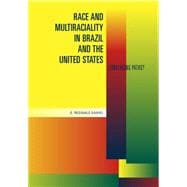
| Preface | p. vii |
| Acknowledgments | p. xv |
| Introduction | p. 1 |
| The Historical Foundation | p. 7 |
| Eurocentrism: Racial Formation and the Master Racial Project | p. 9 |
| The Brazilian Path: The Ternary Racial Project | p. 27 |
| The Brazilian Path Less Traveled: Contesting the Ternary Racial Project | p. 53 |
| The U.S. Path: The Binary Racial Project | p. 85 |
| The U.S. Path Less Traveled: Contesting the Binary Racial Project | p. 119 |
| Converging Paths | p. 139 |
| A New U.S. Racial Order: The Demise of Jim Crow Segregation | p. 141 |
| A New Brazilian Racial Order: A Decline in the Racial Democracy Ideology | p. 175 |
| The U.S. Convergence: Toward the Brazilian Path | p. 201 |
| The Brazilian Convergence: Toward the U.S. Path | p. 237 |
| Epilogue: The U.S. and Brazilian Racial Orders: Changing Points of Reference | p. 259 |
| References | p. 299 |
| Index | p. 335 |
| Table of Contents provided by Ingram. All Rights Reserved. |
The New copy of this book will include any supplemental materials advertised. Please check the title of the book to determine if it should include any access cards, study guides, lab manuals, CDs, etc.
The Used, Rental and eBook copies of this book are not guaranteed to include any supplemental materials. Typically, only the book itself is included. This is true even if the title states it includes any access cards, study guides, lab manuals, CDs, etc.